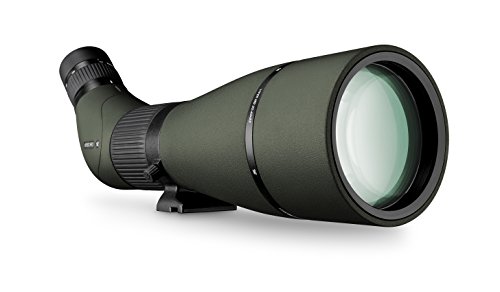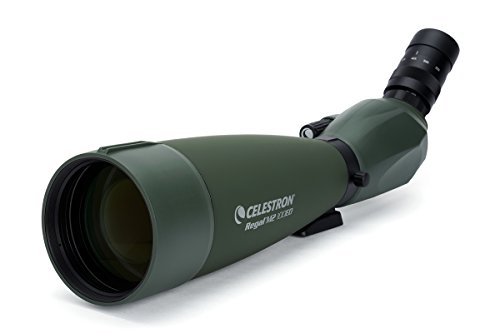4 Best Long-Range Spotting Scopes for 1000+ Yards in 2025 – Top Picks & Reviews
Last Updated on
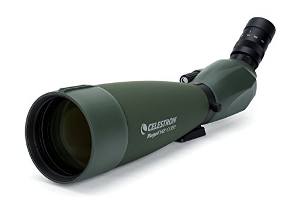
We took a look at a handful of long range spotting scopes capable of processing images more than 1,000 yards away and wrote reviews of them. But, you’ll probably want to go a step further and take our recommendations as a starting point to researching which scope is the right one for you. In that case, we also put together a buyer’s guide to help you get a better idea of how you can go about figuring out the best 1000 yard spotting scope for you. We hope you find this informative as we enjoyed putting it together for you.

Our Favorite Picks of 2025 Summarized
| Image | Product | Details | ||
|---|---|---|---|---|
| Best Overall |
 |
Bushnell Elite |
|
CHECK PRICE |
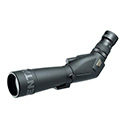 |
Pentax 80mm Long Range |
|
CHECK PRICE | |
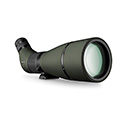 |
Vortex Viper HD Long-Range |
|
CHECK PRICE | |
| Best Value |
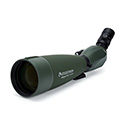 |
Celestron Regal M2 |
|
CHECK PRICE |
The 4 Best Spotting Scopes for Long Range – Our Reviews
1. Bushnell Elite 20-60x Spotting Scope – Best Overall
The Bushnell Elite is a top-of-the-line spotting scope excellent for use at long range. It’s simply light years ahead of the rest of the field when it comes to optics, weatherproofing, and image quality. If money is no object to you, there’s no question that this is the one and only scope you’ll want to look at.
It’s one thing to get crisp, clear images close in, but it’s a very different challenge to get them from far out. The Elite incorporates every piece of the latest optics technology, from a high-quality prism to low-dispersion glass to fully coated lenses, to address all of the things that lead to image degradation.
One thing it will also do is set you back a pretty penny. And, by a pretty penny, we mean a dump truck full of pennies. The Elite’s elite imaging doesn’t come at a budget price. If you’re serious about long-range shooting, however, we’re willing to be that you’re willing to spend the money.
- Fully weatherproof
- Top-of-the-line optics
- Great imaging at long distances
- Price
2. Pentax 80mm Long Range Spotting Scope
The Pentax PF-80ED is a great little brother to the Bushnell Elite. It has terrific optics with top-of-the-line design features like low-dispersion glass and multi-coated lenses. It’s designed to deliver high-quality images, and it delivers on those. In fact, it’s just about Bushnell’s equal and its price nearly got it our top pick selection.
It’s durable, lightweight, weatherproof, and capable of sharp imaging out to 1,000 yards with very little color distortion thanks to its ED glass. Compared to the Bushnell Elite, it’s also noticeably cheaper.
So, why didn’t it get our Top Pick rank? Its images aren’t as clear at long ranges as the Bushnell. Out to 500 yards, images are clear as day and sharp. Out to 1,000 yards, images are clear as day and sharp—but only under optimal conditions. In anything less than optimal conditions, you can pick out bullet clusters only about 50 percent of the time, with that number going down the further out you go. This makes it an excellent mid-range spotting scope, and a good long-range scope. The Bushnell is excellent at both.
- High-quality images
- Excellent optics features
- More affordable
- Slightly less able to spot small object at distances
3. Vortex Viper HD Long-Range Spotting Scope
Don’t let its next-to-last ranking fool you. The Vortex Optics Viper HD V502 can compete with our top two picks in terms of image quality and top-shelf optics full of the most advanced features. It’s an excellent scope, especially when you consider the price.
The best way to describe it is as a high-end scope at a mid-range price. That makes it just an outstanding value in terms of getting back what money you put into it. It’s got a great field of view at its widest, but can narrow down for use at the range. It’s waterproof and sealed so that outside moisture won’t get in and wreak havoc with the imaging.
There are two things that hold it back from being a truly elite model. The first is that it’s pretty heavy for a spotting scope. That’s maybe less of a drawback for use at the range, where you’re going to set it up and leave it be. There’s also some marked falloff in image quality at longer ranges. It’s enough that, despite its appreciably lower price, this one ranks in at a solid third.
- Topflight optics
- Great images
- Great value
- Heavy
- Falloff in quality at long range
4. Celestron Regal M2 1000 Yard Spotting Scope – Best Value
If you’re looking for a long range spotting scope that returns great value for the money you spend on it, the Celestron 52306 Regal M2 100ED is a prime candidate. In terms of price, it’s less than half the cost of our top pick, the Bushnell Elite. If you live on a limited budget, that’s an important selling point, especially since it does a pretty good job at what it’s supposed to do.
The optics come with all the important features that help make imaging at a distance better. It’s built with low-dispersion glass and the optics have multi-layered coatings. Both of these correct problems associated with image blurring and distortion, especially at higher magnifications and at longer distances.
It just doesn’t match up to the others in terms of quality at long range, however. Between 500 and 1,000 yards, the quality starts to decline and it stops being able to hold its own. For a long-range spotting scope, that’s a serious drawback. We also felt like the weight wasn’t distributed all that well. Too much was on the back end, which pushes the objective lens up if it isn’t locked down tight or it gets bumped.
- Fantastic value
- Sharp images throughout zoom range
- Rear heavy
- Not great for long ranges

Buyer’s Guide
A sharpshooter who can shoot accurately beyond 1,000 yards isn’t just someone who is good with guns. Most often, that person is part of a system intended to deliver precision results. That includes skills in shooting, a rifle built to deliver accuracy range, and an excellent spotting scope. The scope doesn’t play an immediate role in the firing, but it can clarify the right target and help deliver accurate post-shot information on accuracy. If this is what you want, you’re going to want the best. It’s probably also best if you’re willing to spend the money to get the right scope for you, even if it comes with a hefty price tag.
With that in mind, we understand if you see our reviews as a starting point toward a purchase destination rather than a firm recommendation. We took the guidelines we used in shaping our reviews and put them in this buyer’s guide to help you make an informed choice. We hope you find it useful.
- You might also be interested in: 9 Best Rifle Bipods for Hunting and Shooting
Optics quality
When looking at spotting scopes for ranges beyond 1,000 yards, you really need to place a premium on how sharply it can recreate the image. Those ranges aren’t just about raw range, but also atmospheric factors in between that can degrade and blur the image as processed by a scope’s internal elements. Rather than raw magnification power, that means looking for features that help reduce those things. This starts with the objective lens, which is the lens on the front of the scope. In fact, a high-quality objective lens produces better imaging than a mediocre lens with a big magnification factor.
A large lens permits the greatest amount of light to enter the scope, which is helpful in low-light environments such as dusk or cloudy, overcast days. But, you also want a lens made of the highest quality materials.
For shooting beyond 1,000 yards, you will also definitely want a lens made out of extra-low-dispersion glass. This kind of glass helps manage the different times that different color parts of the visible light spectrum are processed, which can lead to aberrations in how color is processed. The result is images, especially from a long distance, that have higher contrast and sharper colors.
You’ll also want to make sure that a scope’s prism is as good as the lens. There are different grades of prism construction, with BAK-4 being the best. A BK7, another popular material used to make prisms, is more affordable but less fine.
Coating
When visible light hits a scope, some of it naturally reflects away and is lost. Sometimes, the loss can be pretty significant, and at ranges of more than 1,000 yards, this can seriously degrade the quality of the image you see. A good way to significantly reduce this is by coating the lens. Usually the coating is a very fine layer of magnesium fluoride, but some scope manufacturers use their own proprietary formula.
There are different approaches to applying a coating. Considering the ranges we’re talking about here, however, you should look for a more robust multi-layer coated optics to capture as much light as possible.
Magnification
Think of a scope’s magnification as its rough draft. It produces a basic image and, depending on atmospherics, it can be a pretty good image. But it still needs to get honed and fine-tuned. That’s where the lens quality and coating comes in. Magnification is important, but because it just creates the raw data it isn’t as important for shooting at extreme ranges as how well the scope improves upon it.
That said, nothing less than 30x will deliver an image worth tweaking at that range. Most scopes come with a magnification range, and if 30x is in there, that should work. Incidentally, you might see magnification expressed at 20-60×80. That means the magnification range is 20-60 times the original with a lens of 80mm. This number is helpful if you’re looking for a specific lens size in addition to a magnification range.
Related articles: How to choose the right spotting scope for your needs
Field of view
Because of the long ranges we’re talking about, it will be easy to lose a small target at a distance. So, you’ll want to consider a scope’s field of view, which is the size of the landscape in view of the scope. To get the best use of your scope, look for one that has a field of view of about 150 feet so you can pick out what you’re tracking and zero in on it.
Environmental protection
The last thing you should look at is how well your scope is protected from the environment you will use it in. This is especially the case with water resistance, as water that seeps into your scope can degrade your ability to see at a distance through internal condensation. If you plan to operate in a damp environment (in the rain or near a swamp) look for a scope that is waterproof and fogproof to protect the internal integrity of your scope.

Conclusion:
If you’re looking for a great long range scope for 1000+ yards, we like the Bushnell Elite 20-60x Spotting Scope, as it has everything you’d want in a target scope. The Pentax 80mm Long Range Spotting Scope is a worthy budget-conscious runner-up, but its images aren’t as clear at long ranges as the Bushnell.
We hope you found value in our reviews and that they provide some food for thought as you shop for a target scope to fit your own budget. If you thought our reviews were a great starting point, we hope that our buyer’s guide gave you enough insights into our evaluation process to help shape your thinking. We wish you the best in shopping for a target scope to fit a budget, and the best of luck at the range.
In other news: we also published an article where we break down the 5 best 100+ yards spotting scopes this year.
About the Author Robert Sparks
Robert’s obsession with all things optical started early in life, when his optician father would bring home prototypes for Robert to play with. Nowadays, Robert is dedicated to helping others find the right optics for their needs. His hobbies include astronomy, astrophysics, and model building. Originally from Newark, NJ, he resides in Santa Fe, New Mexico, where the nighttime skies are filled with glittering stars.
Related Articles:
How to Clean a Refractor Telescope: Step-by-Step Guide
How to Clean a Telescope Eyepiece: Step-by-Step Guide
How to Clean a Rifle Scope: 8 Expert Tips
Monocular vs Telescope: Differences Explained (With Pictures)
What Is a Monocular Used For? 8 Common Functions
How to Clean a Telescope Mirror: 8 Expert Tips
Brightfield vs Phase Contrast Microscopy: The Differences Explained
SkyCamHD Drone Review: Pros, Cons, FAQ, & Verdict






